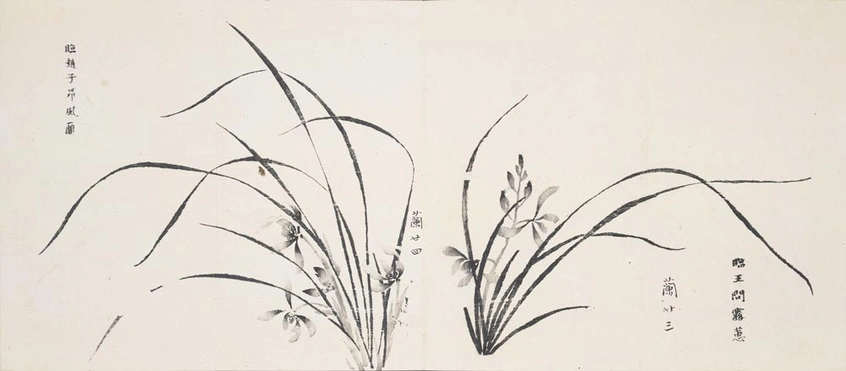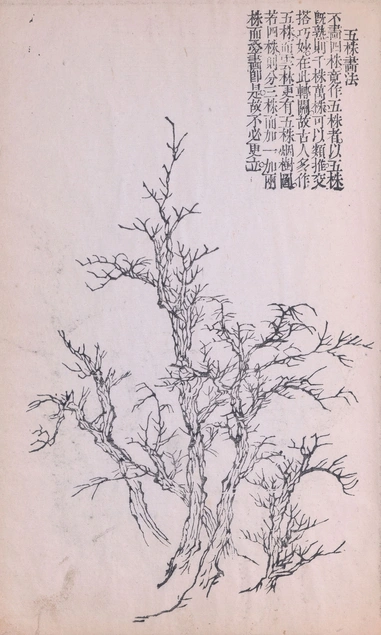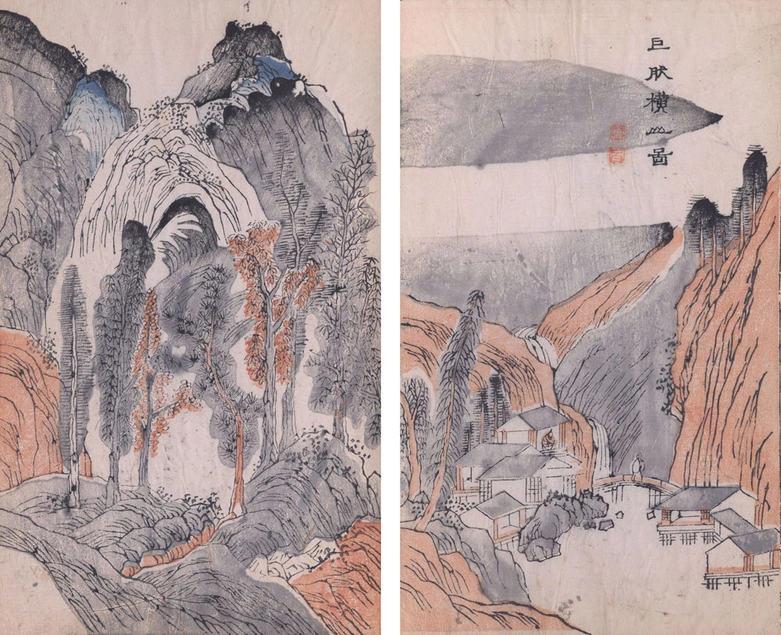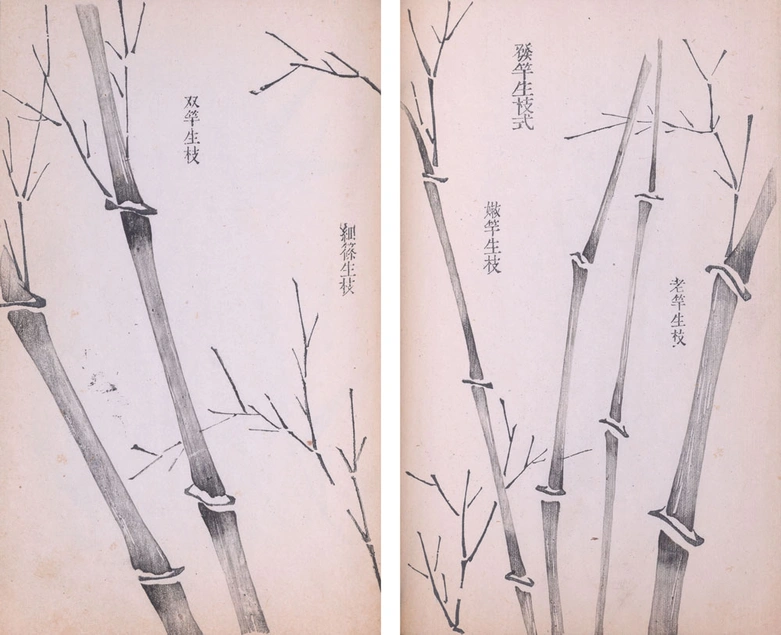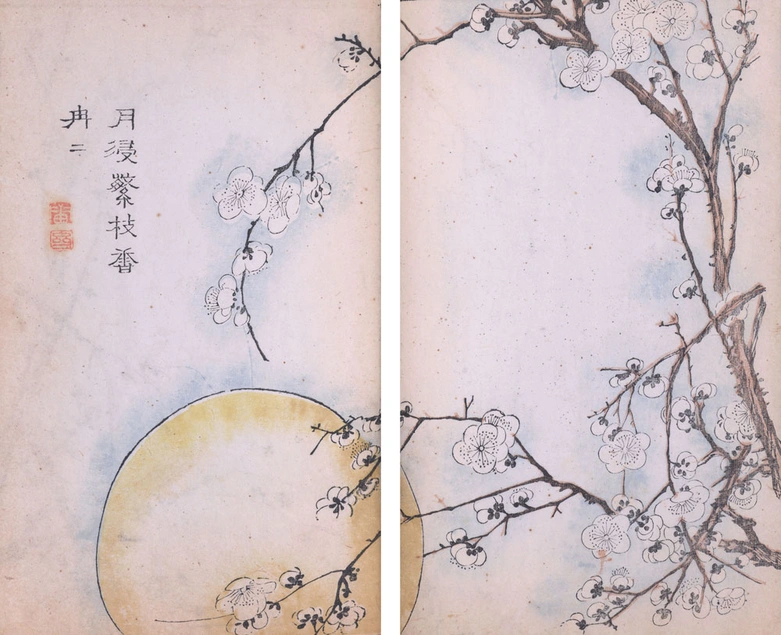SAN MARINO, Calif.—How do you paint a persimmon, a bird, or a landscape? A new exhibition at The Huntington Library, Art Museum, and Botanical Gardens will provide visitors with the opportunity to gain insight into early art education in China through painting manuals originally published in the 17th and 18th centuries. Running from Oct. 7, 2023, through May 27, 2024, “Paintings in Print: Studying Art in China” will examine the ways these manuals used innovative printing methods to introduce the techniques, history, and appreciation of painting to widening audiences in early modern China. The exhibition will be presented in the Chinese Garden’s art gallery, Studio for Lodging the Mind 寓意齋.
“Chinese painting manuals make a tantalizing promise: By studying their texts and copying their images, you, too, can become a literati painter,” said Michelle Bailey, The Huntington’s curatorial assistant of Asian gardens and curator of the exhibition. “These manuals offered growing audiences a chance to learn and appreciate brush arts that were traditionally practiced by elite scholars. The multicolor woodblock prints in these books are now seen as art themselves. Printed painting manuals continue to be revised and reissued in East Asia and beyond, keeping their promise alive.”
In the 16th century, Chinese publishers began creating educational art manuals that were filled with colorful prints of paintings and texts on the history and methods of brush arts. The manuals were unprecedented because they taught aspiring painters and collectors from the growing merchant class how to create and appreciate literati art—a combination of painting, calligraphy, and poetry long practiced by elite scholars. Drawing from The Huntington’s collection, “Paintings in Print” will focus on two books: The Mustard Seed Garden Manual of Painting and the Ten Bamboo Studio Collection of Calligraphy and Painting. The books will be displayed together, in their entirety, for the first time in the United States. The texts will be presented in their original form as well as digitized to allow visitors to explore the materials more closely.
The Mustard Seed Garden Manual of Painting is arguably the most influential guide to Chinese painting. It contains foundational instructions for an amateur painter, including how to produce landscapes—the most esteemed genre of literati art. The copy on display in the exhibition was produced in Suzhou in 1782, about 100 years after the manual’s first edition, which was printed in Nanjing.
The Ten Bamboo Studio Collection of Calligraphy and Painting (1633) enticed its audiences with innovative color woodblock printing techniques that imitated painted brushwork. Created over the course of 14 years by publisher Hu Zhengyan, the manual showcases the work of more than 100 artists and artisans on such subjects as flora, fauna, calligraphy, and painting—topics of interest to both painters and collectors. Each composition is paired with a poem written in calligraphy. The painting-like prints in the Ten Bamboo Studio Collection inspired generations of publishers, including those responsible for the Mustard Seed Garden Manual. The Huntington will exhibit a rare copy of the Ten Bamboo Studio Collection, printed sometime between 1633 and 1703, that used the original woodblocks from the first edition.
The books will be complemented with paintings—including recent donations from the Berman Foundation—that exemplify how artists studied manuals like these to learn the basics of their art.
# # #
[EDITOR’S NOTE: High-resolution digital images available for publicity use. Request Images]
About The Huntington
The Huntington Library, Art Museum, and Botanical Gardens is a collections-based research and educational institution that aspires to be a welcoming place of engagement and reflection for a diverse community. In 2008, The Huntington established its Chinese Garden, Liu Fang Yuan 流芳園, the Garden of Flowing Fragrance, which is one of the largest and most authentic classical-style gardens outside of China. Enthusiastically supported by the local community, the garden has quickly become a nexus for cross-cultural exchange. Through its Center for East Asian Garden Studies, The Huntington uses the Chinese Garden as the focal point for a wide variety of lectures, symposia, exhibitions, and performances that help promote a deeper understanding and appreciation of Chinese culture. More information about The Huntington can be found online at huntington.org.
Contacts
Keisha Raines, 626-405-2246, kraines@huntington.org
Thea M. Page, 626-405-2260, tpage@huntington.org

